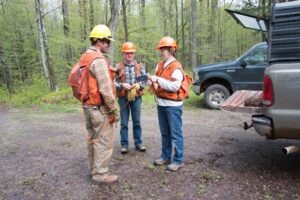By Scott Lyon, WI DNR Forest Products Specialist
Lumber manufactured into interior wood products (e.g., furniture, flooring, millwork, cabinets) typically requires kiln drying to reach a targeted moisture content to minimize dimensional changes. In Wisconsin, this dry-basis moisture content is 6-8%. Not only does kiln drying allow the wood to equalize to desirable and usable moisture content, it kills fungi and insects that might be present in the lumber.
However, drying stress—commonly called casehardening or tension set—occurs during the drying process. Casehardening is a normal part of the drying process of lumber. It is critically important to relieve this stress as it can lead to warping and twisting when lumber is later re-sawn or machined.
Continue reading “Casehardening Of Lumber: What It Is And How To Relieve It” →



